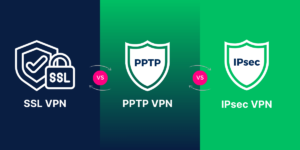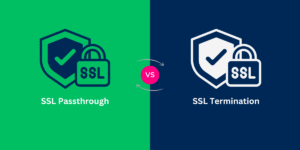Difference Between OV vs EV Code Signing
The selection between OV (Organization Validation) and EV (Extended Validation) Code Signing Certificates depends on your software requirements for trust levels and security standards.
The standard organizational identity verification process of OV Code Signing suits developers with small operations and applications that require minimal security.
The EV Code Signing certificate provides complete legal entity verification and instant SmartScreen reputation and serves as the only option for enterprise software and medical and financial applications.
The two certificates protect your software from tampering while EV provides the highest level of assurance to users.
What is Code Signing?
Code signing represents a digital process which uses trusted Certificate Authority (CA) certificates to authenticate software and executable files and code through cryptographic signatures. The digital signature process verifies both publisher authenticity and code integrity from the time of signing until the present day.
The installation process displays warnings to users when they encounter unsigned code or code with invalid signatures which leads to decreased usage and negative impacts on publisher reputation.
Understanding OV and EV Code Signing Certificates
Organization Validation (OV) Code Signing
The process verifies that the business operates as a legal entity with active operations. Standard SmartScreen trust requirements are met through this validation method which applies to commercial and internal software releases and non-critical deployments.
Best OV Code Signing Certificates from Trusted Brands
Extended Validation (EV) Code Signing
The process demands strict identity verification procedures and legal documentation checks and secure hardware-based key storage systems. The certification provides immediate SmartScreen reputation and fulfills all compliance requirements for kernel-mode drivers and healthcare and finance sectors and large enterprise organizations.
Best EV Code Signing Certificates from Trusted Brands
Comparison Table: OV Code Signing vs EV Code Signing
| Feature | OV Code Signing | EV Code Signing |
|---|---|---|
| Validation Level | Organization identity | Full legal entity verification |
| Verification Process | Manual checks, public documents | Extensive legal review, legal opinion letters |
| Issuance Timeframe | 1–3 days | 3–5+ days |
| Cost | $80–$500/year | $300–$1500+/year |
| Immediate SmartScreen Reputation | No | Yes |
| Private Key Storage | Software, HSM, or USB | Hardware (HSM, USB, token) |
| Use Cases | Small devs, internal, beta | Consumer, enterprise, regulated software |
| Platform Compatibility | All major OS | All major OS, required for kernel-mode drivers |
Also Read: DV SSL vs OV SSL Certificates
Use Cases and Industry Scenarios of Code Signing Certificates
- The OV certificate is suitable for independent developers and startups who work on non-commercial projects or early-stage code development. The process of issuing certificates through OV is both budget-friendly and quick.
- The EV certificate is required for all software applications that need to meet high regulatory standards and public exposure requirements because it provides maximum publisher trust and verified identity protection.
- The Windows kernel-mode driver requirements for new software signed drivers can only be met by EV certificates but OV certificates work for internal and older driver applications.
- OV certificates provide fast distribution capabilities but EV certificates take longer to issue although they offer the highest level of publisher trust.
Benefits and Drawbacks
Benefits of OV Code Signing:
- Rapid, affordable issuance
- Flexible private key storage options
- Meets needs for most businesses
Drawbacks of OV Code Signing:
- No instant SmartScreen reputation
- Insufficient for some compliance needs
- Not allowed for new kernel-driver signing
Benefits of EV Code Signing:
- Maximum trust for users and platforms
- Required for regulated, high-visibility, or enterprise distribution
- Enhanced key security protocol (enforced hardware storage)
Drawbacks of EV Code Signing:
- Higher cost, more documentation
- Stricter issuance process
- Hardware key management adds complexity
Validation, Security & Technical Requirements
In 2025, OV and EV certificates both require robust key storage:
- The RSA key size minimum requirement now stands at 3072 bits.
- EV certificates require private keys to be stored in Hardware Security Modules (HSM) or FIPS 140-2+ tokens because of their critical nature.
- The maximum certificate validity period now stands at 460 days since June 2025 which makes key management and renewal processes more critical than ever.
- The implementation of secure DevOps practices must include automated renewal processes together with HSM integration.
- Organizations should begin preparing for upcoming standards because post-quantum cryptography standards remain far from current adoption levels.
Industry Trends & Stats 2025
- The public distribution of new enterprise software releases through EV code signing has reached 80% in 2025 because organizations need fast reputation verification and stricter compliance standards.
- The 460-day signature validity period has become the norm while organizations perform more frequent key rotations which leads to increased adoption of HSMs and automation systems.
- The number of key compromise incidents decreased by 18% after hardware storage became mandatory for all organizations.
- The leading certification authorities now test blockchain-based signature transparency systems and AI-powered anomaly detection tools for code signing operations.
Experts Insight
Step-by-Step Buyer’s Checklist
- Assess software distribution model and risk profile.
- Choose between OV (routine/SMB/internal) and EV (enterprise/regulatory/kernels) certificate types.
- The verification process for EV certificates will take longer so you should prepare all necessary legal documentation and evidence.
- Choose a Certificate Authority which offers hardware-based certificate issuance and has received approval.
- Plan your certificate management and budget for the upcoming 460-day renewal period.
- The system needs HSM integration or secure DevOps workflow to perform automatic signing and renewal operations.
- Follow updates about quantum computing requirements and CA/Browser Forum standards and regulatory changes.
Final Words
EV Code Signing provides the highest level of security for critical software applications that require absolute trust while OV Code Signing serves organizations with limited budgets and low-risk operations.
The protection of users and brand reputation remains the same for both options but organizations must select between them based on their distribution scope and regulatory requirements and time-to-issue needs.
Select the appropriate code signing solution to achieve maximum trust while reducing security risks.
FAQs about OV Code Signing and EV Code Signing
What is the essential difference between OV and EV certificates?
The main distinction between OV and EV certificates exists in their verification standards because EV certificates need more rigorous organizational verification to establish stronger user trust and additional visible trust indicators than OV certificates do.
Which certificate is more trusted by Windows SmartScreen?
The Windows SmartScreen system trusts EV certificates above all other certificate types because they receive immediate Microsoft SmartScreen reputation status which minimizes installation warnings for EV certificates. OV certificates need to establish their reputation through time-based development.
Which should I choose for my project?
- Use OV certificates for projects that include personal use and open-source development and have limited user distribution.
- Choose EV certificates for business applications and controlled industries and situations where user trust stands as the top priority.
What are the private key storage requirements?
EV: Hardware (HSM/USB token) only.
OV: Hardware storage is the preferred method but software storage options are available for flexibility.
Does OV code signing still work for Windows kernel drivers?
The Windows kernel driver code signing process through OV certificates became obsolete starting from 2023.
How can I ensure my keys are not compromised?
All private keys must be stored in HSMs or FIPS-compliant hardware tokens and key rotations need to happen during every certificate renewal cycle.
What if my certificate expires?
The existing signatures remain valid when using software with trusted timestamps but all new software deployments require a new certificate.
Which certificate do most compliance frameworks recommend?
Most compliance frameworks require organizations to obtain the ISO 27001 certificate.
The majority of compliance frameworks select EV certificates because they serve as their primary option for public disclosure and regulated business operations.
How does the 460-day rule affect me?
Organizations need to create automated renewal systems and maintain correct record management because the 15-month maximum certificate renewal period has been put into effect.

Priya Mervana
 Verified Web Security Experts
Verified Web Security Experts
Priya Mervana is working at SSLInsights.com as a web security expert with over 10 years of experience writing about encryption, SSL certificates, and online privacy. She aims to make complex security topics easily understandable for everyday internet users.



